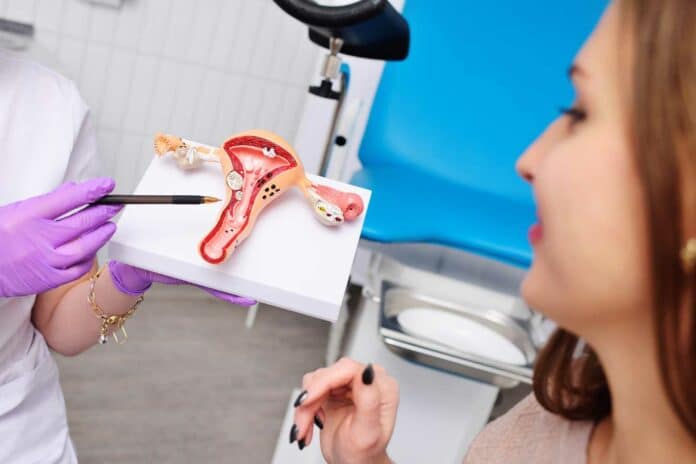Understanding how uterine tumors grow may offer hope to millions of women suffering from painful fibroids. About 8 in 10 women develop noncancerous fibroids in their uterus, causing pain, heavy bleeding, and infertility. Researchers at the University of Cincinnati discovered that fibroid cells use different signaling pathways than uterine cells.
Stacey Schutte, an assistant professor of biomedical engineering at UC’s College of Engineering and Applied Science, said, “That’s important for identifying therapeutic targets because we want to target the tumor without affecting the surrounding tissue.”
According to the National Institutes of Health, treating fibroids can be costly and invasive, with billions spent each year. Such treatments may also lead to infertility. Dr. Schutte, with expertise in this field from Emory University, notes that one in nine women may undergo a hysterectomy in their lifetime, and fibroids contribute to one-third to one-half of these cases. While not usually life-threatening, the pain can be severe, as contractions push the tumors into muscle tissue.
Every menstrual cycle involves the release of estrogen and progesterone, thickening the uterus lining in case of pregnancy. These hormones also promote fibroid growth. Dr. Schutte explains that cells react to physical strain, similar to a defense mechanism. Drawing from cardiovascular research, she notes that mechanical forces can lead cells to produce more extracellular matrix, expanding tissue size.
UC researchers grew fibroid and uterine cells on plates with a flexible bottom. They exposed them to mechanical strain using a tension device. This mimicked the environment fibroids experience in the uterus.
According to study lead author Rachel Warwar, MD, fibroid cells were more sensitive to strain, showing differences in how they held their shape. These findings emphasize the need to consider hormones and mechanical pressure when studying fibroid cells.
Author Rachel Warwar, MD, in UC’s College of Medicine said, “The more we can mimic the environment of these cells in the uterus, the more we will understand the pathology of these cells and can then work to target anomalous pathways in fibroid cells.”
Nearly 4 in 5 women experience fibroids, causing a significant healthcare cost of up to $9 billion annually in the U.S. Common treatments focus on hormones driving fibroid growth. Researchers seeking non-hormonal alternatives aim to preserve fertility for women wanting to get pregnant.
By understanding cell pathology, they plan to use 3D simulations to explore fibroid development and effective treatments. Dr. Schutte is optimistic about finding specific targets to inhibit tumor growth without affecting surrounding muscle cells in future tissue models.
In conclusion, the University of Cincinnati’s study on the growth of painful fibroids reveals significant insights into the distinct signaling pathways involved in fibroid cell development. This research marks a crucial step towards better understanding the processes behind fibroid growth, offering potential avenues for improved and less invasive treatments. The findings hold promise for addressing the challenges faced by millions of women dealing with the pain and complications associated with fibroids.
Journal reference:
- Rachel Warwar, Andreja Moset Zupan, et al., Uterine fibroid cell cytoskeletal organization is affected by altered G protein-coupled estrogen receptor-1 and phosphatidylinositol 3-kinase signaling. The journal F&S Science. DOI: 10.1016/j.xfss.2023.09.007.
